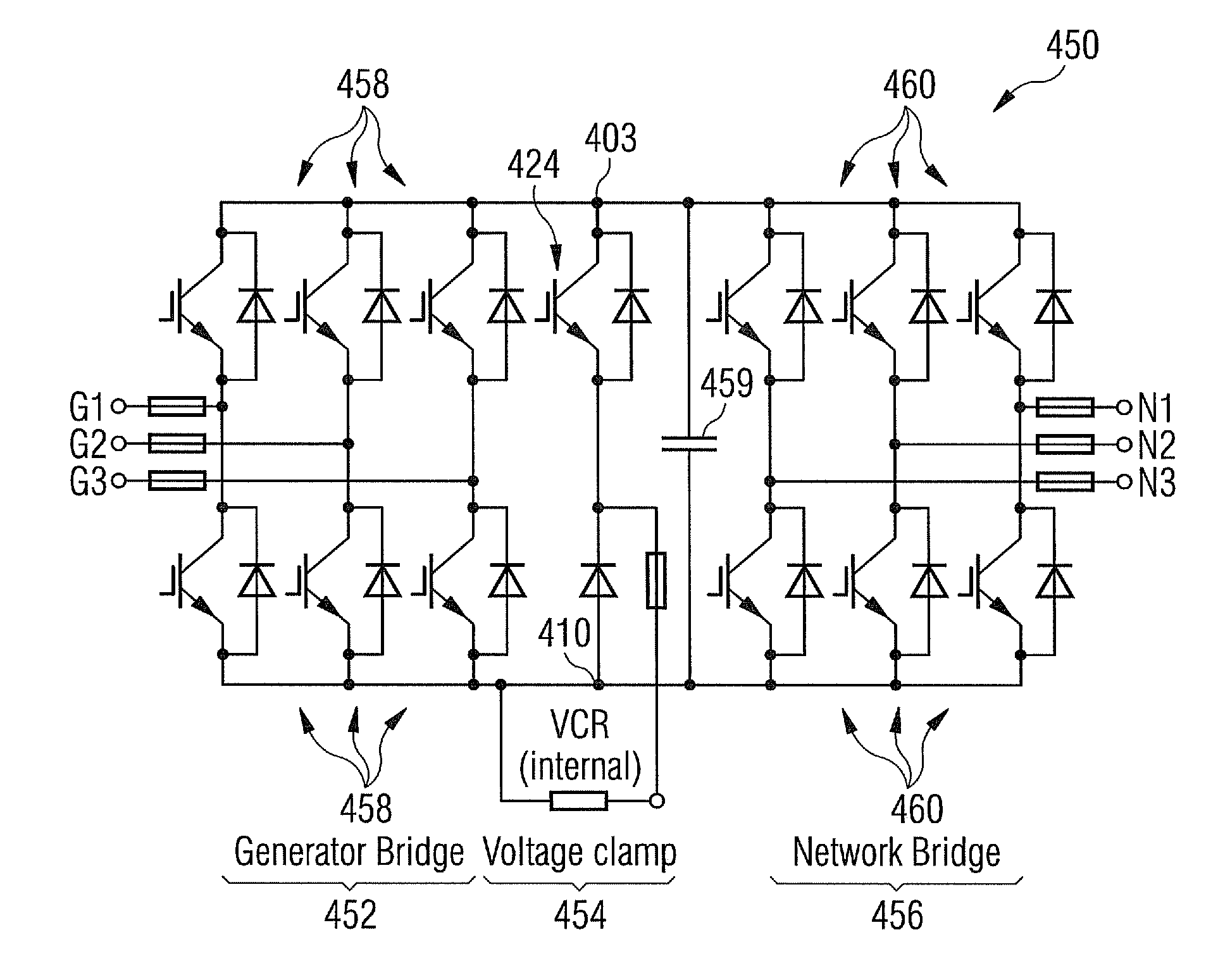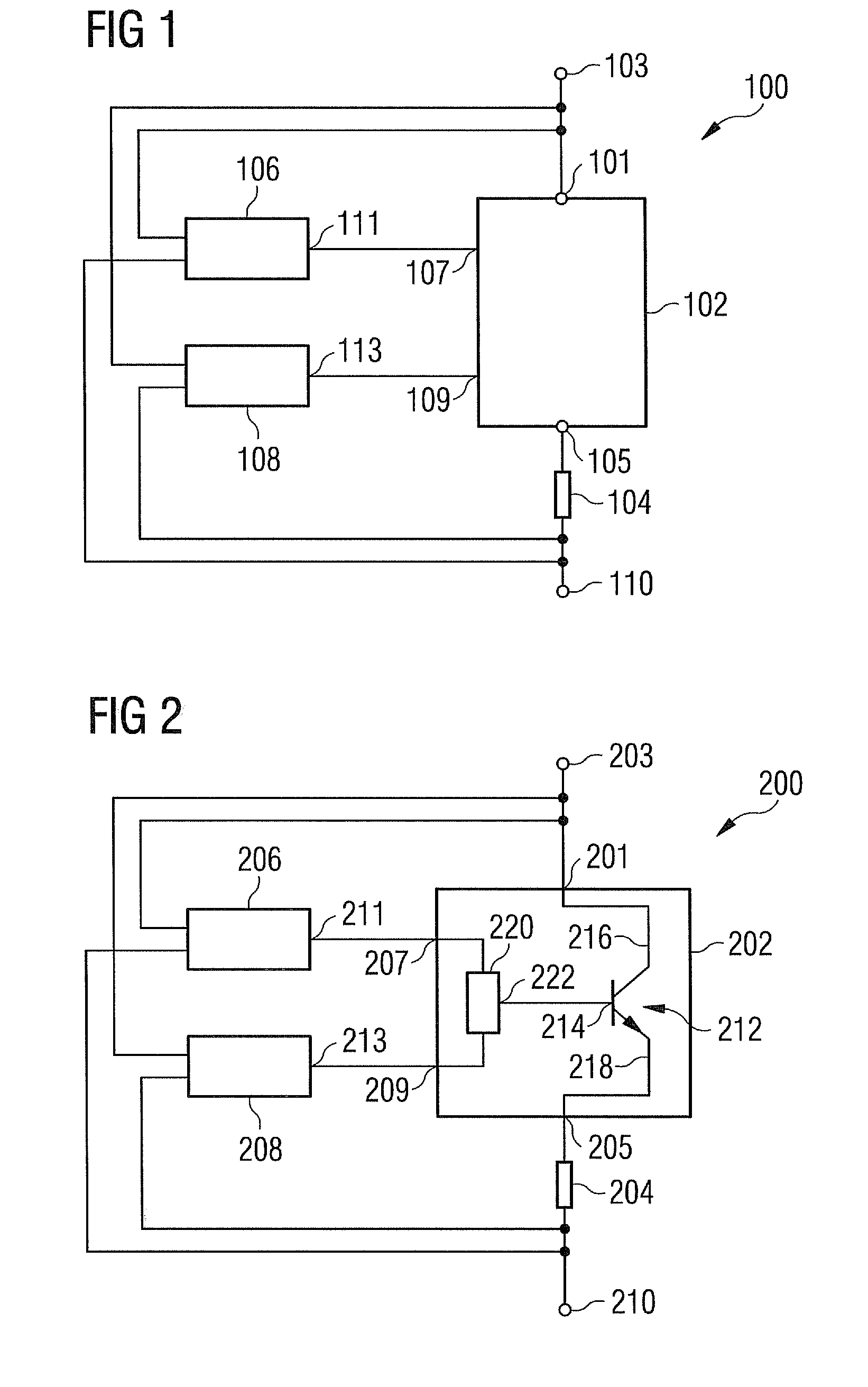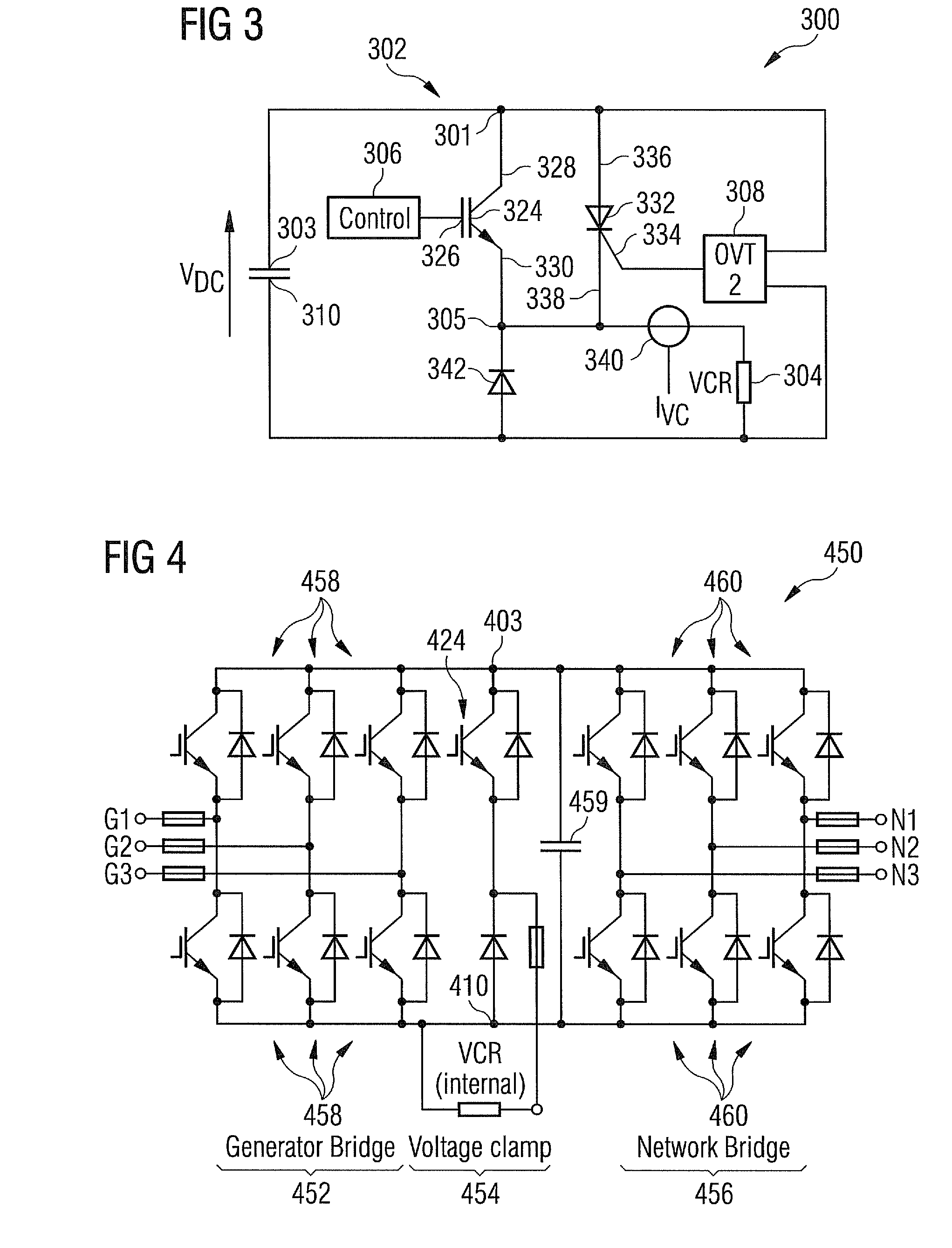Circuit and method for regulating a DC voltage and power converter
a dc voltage and power converter technology, applied in the direction of electric generator control, process and machine control, instruments, etc., can solve the problems of overvoltage of dc-links, increased overall cost of power converters, and large capacitance values, so as to achieve high integrity voltage clamp systems and increase the effect of capacitan
- Summary
- Abstract
- Description
- Claims
- Application Information
AI Technical Summary
Benefits of technology
Problems solved by technology
Method used
Image
Examples
Embodiment Construction
[0051]The illustration in the drawing is shown in schematic form. It is noted that in different figures, similar or identical elements are provided with the same reference signs or with reference signs, which are different from the corresponding reference signs only within the first digit.
[0052]FIG. 1 schematically illustrates a block diagram of a circuit 100 for regulating a DC voltage according to an embodiment. The circuit 100 comprises a controllable switch system 102, a resistor 104, a first control circuit 106 and a second control circuit 108. The controllable switch system 102 has a first terminal 101 connectable to the first DC voltage terminal 103, a second terminal 105, a first control terminal 107, and a second control terminal 109. The first control circuit 106 generates a first control signal at a first control output terminal 111 and the second control circuit generates a second control signal at a second control output terminal 113. The controllable switch system esta...
PUM
 Login to View More
Login to View More Abstract
Description
Claims
Application Information
 Login to View More
Login to View More - R&D
- Intellectual Property
- Life Sciences
- Materials
- Tech Scout
- Unparalleled Data Quality
- Higher Quality Content
- 60% Fewer Hallucinations
Browse by: Latest US Patents, China's latest patents, Technical Efficacy Thesaurus, Application Domain, Technology Topic, Popular Technical Reports.
© 2025 PatSnap. All rights reserved.Legal|Privacy policy|Modern Slavery Act Transparency Statement|Sitemap|About US| Contact US: help@patsnap.com



